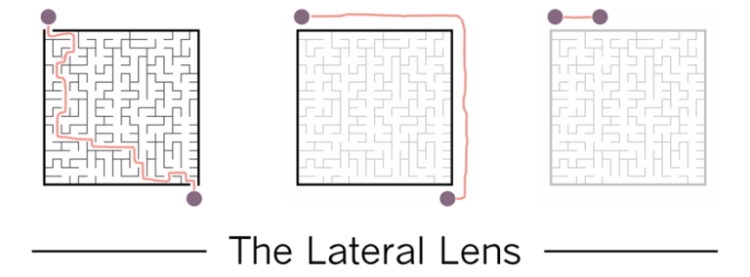
Morton C. Blackwell was a delegate for Barry Goldwater in the 1964 presidential election. Following Goldwater’s dramatic defeat by Lyndon B. Johnson, Blackwell and other conservative strategists started to think hard about why they had lost so badly. He later wrote about these learnings as President of the Leadership Institute. One of the things to come out of this were his 45 laws of public policy process.
A few of these are pure gold. My favorite is Law No. 26: “Personnel is policy.” This is as true in a corporate setting as in government. Marcus Cauchi, a Fractional CRO of several tech firms, points out that when improving a company’s sales organization, a common recommendation that comes back is: “You need to fire your top salespeople.” Why? Well, again, personnel is policy, and your stated values don’t matter a hill of beans in comparison.
Consider all the corporate culture transformations out there, all the organizations broadcasting what their explicit “values” are. Such stated values can serve as aspirations and guideposts, but all too often they just ring hollow.
We can call this “organizational incongruence.” When an organization’s stated values do not match its behavior, that org is incongruent with itself. This is important because…the employees always know. It stinks. They’re there and they can smell it. Blackwell’s 26th Law can be stated another way: What you incentivize is your policy—all else is lip service. When the behavior getting rewarded doesn’t match stated values, people can tell you’re bullshitting.
In his book, Sales Success Stories, Scott Ingram shares some things he learned from Alex Shootman, former CRO of Eloqua, now CEO of Workfront. Shootman has a framework he calls, “Getting It Done and Doing It Right.” Now, we’ve all heard this saying a million times, but hang on a second, because this is more interesting that it seems at first blush. First, the obvious:

At the top right, people getting results while engaging in the right behaviors should be rewarded. If you consider a contrast between your “Is Culture” and “Ought Culture,” by reinforcing the people actually role modeling what you think your culture ought to be, you start to bring your current culture, your “Is Culture,” into alignment with your “Ought Culture.” At the bottom left of the framework, the people engaging in the wrong behaviors who aren’t producing results should be let go. So far, it’s all as expected. Now let’s look at what for some is the first surprise:

If people are role modeling the right behaviors but aren’t getting results, you don’t fire them. You get them coaching. You help them grow. You invest in them. By doing this, you yourself role model that the organization’s values are more important than sheer value. By doing this, you send the message that your “Ought Culture” actually matters. This brings us to the top left, which is the most revelatory part of Shootman’s framework, what Ingram considers the ingenious part:

So, why “fire faster,” as in, these people should not only be fired, but fired like yesterday? Hopefully, a lightbulb has gone off and this is starting to all make sense. Remember, what is incentivized is policy…and all your employees know this deep down. Your “Is Culture” is dominated by your ultra-high performers. If they are not role modeling the right behaviors, then by keeping them around, the message you’re sending to everyone is that your “Ought Culture” is just lip service. Let that sink in.

This framework holds in any org, by the way, but Ingram discusses it in terms of sales. Speaking with Cauchi on The Inquisitor podcast, Ingram asks a simple but powerful question: Which would you rather have more of, $250k deals that cost $240k to deliver, or $180k deals that cost $100k to deliver? Any company should want more of the latter—duh—but most companies incentivize salespeople to maximize the former!
Myopic incentivization drives bad behaviors. Notice the focus is on the value of contracts when they’re made. This is true even if you don’t make much money on these deals in their first year. This is true even if salespeople are pushing suboptimal deals for customers that generate ill will in the marketplace.
And notice what the focus is not on. It’s not on the long-term holistic relationship and lifetime value of a customer. It’s not on the likelihood a customer will bring other customers along. It’s not on the actual behaviors you claim are so important to your culture. In short, it’s not on putting values over value. Remember, what you incentivize is your policy. (Have you got that memorized yet?)

Now, I believe Shootman’s framework has an interesting implication I haven’t seen called out elsewhere: Most of your toxic employees are probably high performers. Remember, the bottom left of the framework is uncontroversial. If they weren’t high performers, then they probably would have been fired already!

These are the people at the top of orgs that no one really wants to collaborate with. They’re assholes, but they’re assholes that get results. These are the people regularly backstabbing their teammates and screwing over their colleagues to get ahead. These are the people who have learned how to play the game and play it at the expense of those around them. Rewarding them for such behavior perpetuates toxic culture.
Toxicity flows downhill. It’s not stopped by lip service. Lip service just means you’re incongruent too, and people are not going to trust you.
You think this doesn’t impact everyone else? Do you really think the results of a few toxic high performers generate more value than the opportunity cost of demoralizing those around them? Consider all the value lost by choosing the results produced by bad actors over maximizing “Is Culture” in a way that lifts all other boats. Maybe we should ask it this way: Have you bothered to consider the “cost of delay” of not firing these people? It’s massive.
This notion of “organizational incongruence” also extends beyond culture toxicity. It applies to any area where, as Gerald Weinberg puts it in The Secrets of Consulting, “Your words don’t match your music.” You get more of what you reward, period. If what you’re rewarding is at odds with what you verbally call for more of, then you don’t really want what you call for more of.
All these executives going around talking about the need for innovation and increasing agility while pushing an out-of-date command-and-control structure focusing on efficiency aren’t going to get agility or innovation. Why? You know why.
What is incentivized is policy, period.

Excellent! This reminds me of Dr. Henry Cloud stating in his book, Boundaries for Leaders, “high performer, bad behavior = out the door”.
LikeLiked by 1 person